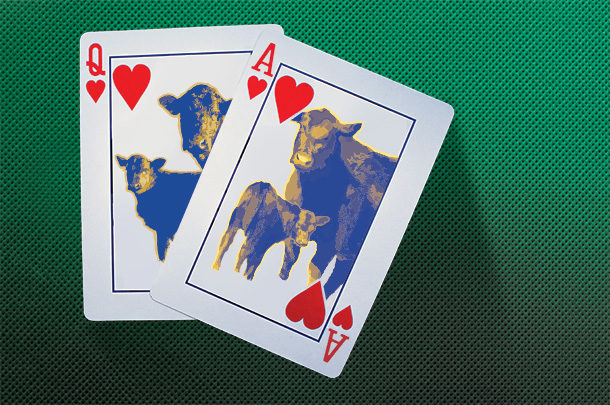Imagine you are playing a betting game and you have brought $20 you are willing to bet. The odds for the game are 4 to 1. If you aren’t familiar with fractional odds, this means that winning the bet would make you 4 x $20, or $80.
You would also keep the $20 you bet, meaning you would have a total of $100 if you win the bet. Ignore your personal sentiments about gambling for now. Let’s say you made the bet and, by whatever stroke of luck or fate, you actually won. You now have the opportunity to bet another round. You could choose to walk away. You could also pocket your $80 in winnings but place another bet with your original $20. But of course, you might now be willing to place a larger bet using some or all of your newly won $80. That $80 is what one could call “house money.”
The behavioral psychology behind risk-taking is quite interesting, and this very concept was the topic of a highly influential paper by Dr. Richard Thaler and Dr. Eric Johnson titled, “Gambling with the house money and trying to break even: The effects of prior outcomes on risky choices.”
Their research suggests you are indeed more likely to place another, larger bet than you otherwise would, in part because it feels as though you have an opportunity to gamble with free money. The psychology of house money is a bit beyond the scope of what I intend to talk about. But house money in and of itself is a great example of the opportunity to reinvest returns in additional opportunities.
Return on equity
Return on equity (ROE) is a critically important assessment of a business (Note: Return on investment, or ROI, is equally appropriate if not using leverage. But to drive the point home that we are trying to compound profits by reinvesting returns, we will use the term ROE.) In the gambling scenario described above, let’s call the original $20 your starting equity. Having invested $20 in equity and made a return of $80, you could say you made a return of 400%.
Let’s suppose you then invest both your original equity and your winnings back in making another bet, this time investing $100. Again, by some stroke of luck or fate, you happen to win. The 4-to-1 odds generate you another $400 in winnings, and you keep your $100 bet as well for a total of $500. Having walked in with $20 in equity, you leave with a return of $480 – a whopping 2,400% ROE.
Unfortunately, I will not be telling you how to make a 2,400% ROE in the cattle business. I also don’t intend to imply that the cattle business is akin to gambling necessarily. But the concept of playing with house money is helpful. If you are a cow-calf-focused operation today, you have substantial equity wrapped up in breeding stock. For most cow-calf operations, the returns produced are primarily from the sale of calves at weaning. That is often a missed opportunity.
Integrating enterprises
Cow-calf operations that integrate enterprises involving growing cattle often offer greater ROE. This is because the calf produced by the cow-calf operation is, in part, house money. The initial bet was placed on the breeding female in the cow-calf enterprise. Now that the calf is produced, integrating additional profitable enterprises to upgrade the value of that calf allows that initial bet to carry forward as a larger bet. The second bet – reinvesting the calf in a stocker-backgrounder, finishing or heifer development enterprise – might be an opportunity to generate even greater returns off the original equity. If that enterprise is independently profitable on its own, the overall ROE for the farm or ranch could be improved.
You might be cautious about your opportunities to add value to growing calves because it would take away forage resources from your cow-calf operation, reducing the number of cows you can run. That is a very real consideration if your access to land is limited or the carrying capacity of your land cannot be improved further. But stop and consider the implications before dismissing the option, however.
Reducing the number of cows carried on the farm or ranch also means reducing the amount of equity tied up in the cow herd. If the now-larger growing cattle enterprises (stockers, heifer development, etc.) are sufficiently profitable to allow for increased or greater overall profits while at the same time requiring a reduced amount of equity tied up in breeding stock … doesn’t that sound like something worth considering? Greater or similar returns with less equity at stake means the ROE for the farm or ranch has improved overall. Don’t forget that equity formerly tied up in cows can be reinvested in another profitable opportunity.
Changing the cow marketing mindset
The most exciting piece of all this, from my perspective, is the opportunity to actually improve the return potential of the cow-calf enterprise itself. In many cow-calf operations I have worked with around the country, a proportion of the cows in the cow-calf enterprise are actually only marginally profitable. In some cases, a sizable proportion of the cow herd is even producing net negative margins when all costs are considered.
To repeat a point I frequently make in these articles, the low-margin cows are the cows that conceived late this year. Identifying them at pregnancy diagnosis and marketing them at some point prior to calving is a major, major opportunity. Not only does that strategy mean the operation only remains invested only in high-revenue-producing cows, but it also allows the operation to better capture the value of breeding stock, which are marketed bred and younger rather than open and older. Marketing those cows this year as bred females rather than next year as potentially open females is a relatively minor adjustment in practice, but it is a major adjustment in mindset.
Draw it out
What enterprises do you have? What are the products you market out of each enterprise? Where do those products get sold? It is really helpful to draw it out. Grab a piece of paper and spend some time trying to sketch out what exactly it is that you do. If it doesn’t look like you have integrated enterprises, get creative about what you might do differently. If I were a betting man, I would bet you come up with some opportunities you have not seen before.









